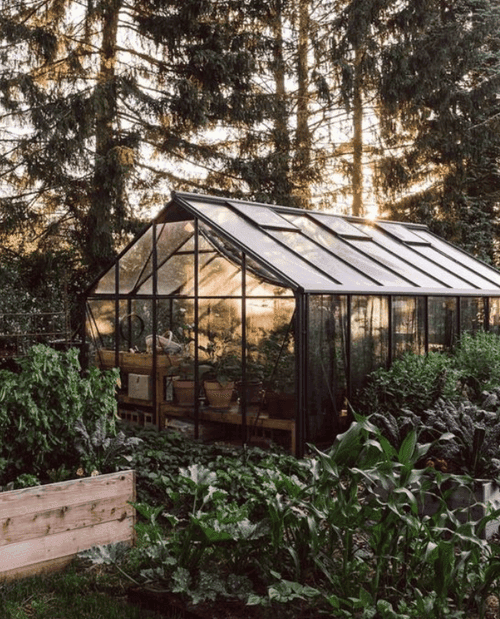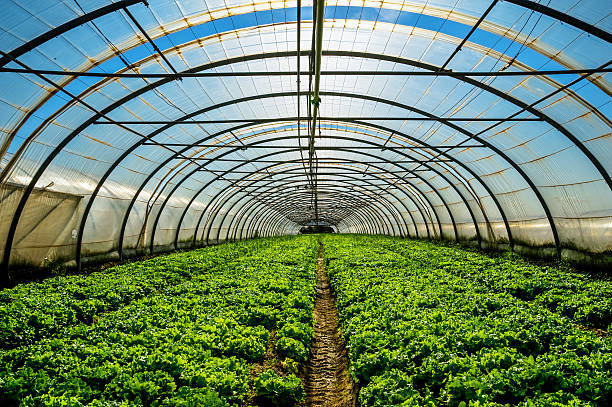The Future of Greenhouses: Innovations in Sustainable Agriculture
Are you curious concerning the future of greenhouses and how they are transforming lasting agriculture? Look no more! In this write-up, we will certainly discover the amazing advancements that are leading the way for a greener and a lot more efficient farming sector. From advanced environment control systems to vertical farming methods, water-efficient irrigation techniques, renewable resource integration, and clever data analytics, these developments are changing the way we grow our food. Prepare yourself to find the future of lasting farming in greenhouses!
Advanced Environment Control Solution
To accomplish optimum expanding problems, you can count on the developments in greenhouses with sophisticated environment control systems. These systems have revolutionized the method we grow crops, offering a controlled setting that contributes to plant growth. With these innovative systems, you can currently control temperature, humidity, light degrees, and also CO2 focus to produce the ideal problems for your plants to prosper.
Among the crucial attributes of these innovative environment control systems is their capability to control temperature. By using sensing units and automated controls, the greenhouse can adjust the temperature level based upon the certain needs of the plants. This makes certain that they are never exposed to extreme warmth or cool, which can be destructive to their growth.
Moisture control is one more vital element of these systems. By maintaining the suitable humidity degrees, you can prevent concerns such as mold, mold, and condition from influencing your crops. These systems can additionally regulate the amount of light that gets to the plants, guaranteeing that they receive the optimal quantity for photosynthesis.
Moreover, progressed climate control systems can even adjust CO2 focus. By boosting the degrees of CO2 in the greenhouse, you can improve plant development and productivity. This is specifically advantageous in areas with reduced natural carbon dioxide degrees.
Vertical Farming Techniques
One vital vertical farming strategy is making use of stacked expanding systems. Monarch Greenhouse installation Utah. These systems entail preparing plants in multiple layers, vertically stacked on top of each various other. By utilizing upright space, farmers can maximize their plant return without calling for added land. Stacked expanding systems are frequently used in urban locations where area is limited.
One prominent approach is referred to as vertical hydroponics, where plants are expanded in nutrient-rich water without dirt. This technique is highly efficient as it reduces water usage by approximately 90% compared to standard farming methods. In addition, because the plants are expanded inside, they are protected from pests and diseases, decreasing the need for pesticides.
One more technique is aeroponics, which entails suspending the plant roots in a haze or air atmosphere. This technique enables for optimal nutrient absorption and oxygenation, causing faster development and higher returns. Aeroponics also makes use of less water than conventional farming and can be applied in vertical systems, making it a prominent choice for vertical farming.
Water-efficient Irrigation Approaches
When it comes to executing water-efficient watering techniques in lasting farming,Taking full advantage of water conservation is vital. With global water deficiency coming to be a pressing problem, it is vital to establish ingenious strategies that optimize water usage in greenhouse operations.
One encouraging approach is drip irrigation, which provides water straight to the plant roots, lessening waste and dissipation. By making use of a network of tubes with tiny emitters, water he has a good point is applied gradually and exactly, ensuring that plants get the required moisture without excess runoff.
Another reliable technique is making use of dirt wetness sensors. These gadgets gauge the wetness content in the soil and give real-time information to farmers. By keeping track of the soil's moisture degrees, farmers can properly determine when and exactly how much water to use, preventing over-irrigation.
Moreover, the execution of rain harvesting systems is acquiring popularity in greenhouse farming. Accumulating rainwater from roofs and keeping it in tanks allows farmers to utilize this natural resource for irrigation objectives, decreasing reliance on conventional water resources.
Lastly, the adoption of automated watering systems can significantly improve water effectiveness. These systems other make use of sensors to detect dirt dampness levels and weather condition problems, readjusting irrigation timetables as necessary. By maximizing water use based on real plant requirements, these systems can reduce water waste and advertise sustainable farming methods.
Renewable Resource Assimilation
Now, let's explore just how you can incorporate renewable resource right into your greenhouse procedures for a more sustainable future. Renewable resource assimilation in greenhouses uses a number of benefits, consisting of decreased operating expenses and reduced dependence on non-renewable energy sources. One means to integrate renewable resource is via the installation of solar panels. These panels are placed on the roof or surrounding locations of the greenhouse to record sunlight and convert it into electricity. The produced power can then be used to run various procedures within the greenhouse, such as illumination, ventilation, and home heating systems. Additionally, excess power can be saved in batteries for usage during non-sunlight hours. An additional method of eco-friendly power assimilation is making use of wind generators. These turbines harness wind power and transform it right into electricity, which can be used to supplement the power demands of the greenhouse. Incorporating eco-friendly power sources not visit this website just minimizes greenhouse gas emissions yet also advertises sustainability and strength in your farming procedures. By welcoming renewable resource, you can contribute to a greener future while making certain the long-term stability of your greenhouse company.
Smart Data Analytics and Automation
To boost the performance of your greenhouse operations and optimize resource use, consider applying smart information analytics and automation. Smart data analytics entails collecting and evaluating data from numerous sensing units and devices within your greenhouse. By checking factors such as temperature, humidity, light degrees, and soil moisture, you can obtain beneficial understandings into the health and wellness and growth of your plants. This information can aid you make informed decisions regarding readjusting ecological conditions, enhancing watering timetables, and stopping potential issues before they develop.
This can consist of automating the control of lights, ventilation, irrigation systems, and nutrient distribution. By automating these procedures, you can make sure that your plants get the best problems and nutrients at the right time, without the need for constant hand-operated treatment.
Moreover, smart data analytics and automation can interact synergistically. The data collected by sensors can be used to educate automatic systems, allowing them to make real-time modifications based on the present problems. This combination of data analytics and automation can bring about more effective and specific resource allocation, inevitably leading to greater returns and much better plant high quality.
Verdict
Finally, the future of greenhouses in sustainable farming looks encouraging. With sophisticated environment control systems, upright farming strategies, water-efficient watering methods, and renewable resource combination, greenhouses are coming to be more environmentally friendly and effective. In addition, the use of wise data analytics and automation further enhances efficiency and reduces waste. These advancements are leading the way for a much more effective and sustainable farming industry, guaranteeing a greener and healthier future for all.

By optimizing water usage based on real plant demands, these systems can reduce water waste and advertise lasting farming methods.
